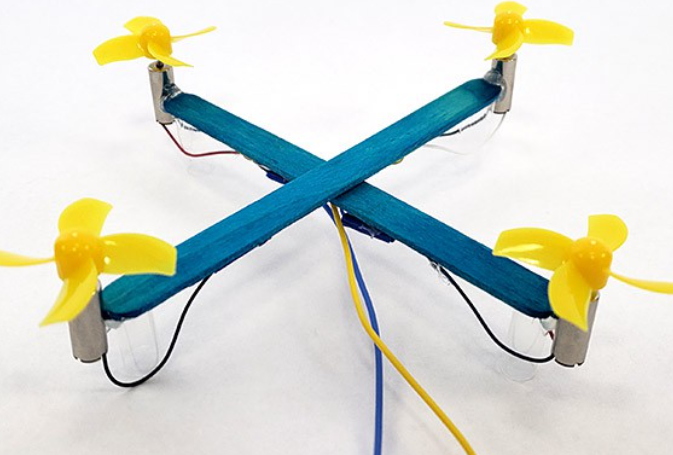
Science fairs provide various advantages for both students and the broader public. These exercises allow students to demonstrate their scientific ingenuity and knowledge, fostering a greater understanding of science and its practical applications. It can assist students in improving their critical thinking skills, creativity, research abilities, and overall interest in STEM. Here are four cutting-edge drone projects and experiments (and questions) that students in grades 3-5 can conduct and answer!
1. Wildlife Observation (Easy)
Numerous questions can be asked and answered through nature exploration. Students can go on field trips to nearby parks, green spaces, or their backyards. Students can track a squirrel back to their nut stockpile, investigate which flowers attract bees and butterflies, and discover a sparrow’s nest. The use of a drone for exploration is highly beneficial in their research. A drone allows the student to observe while keeping a safe distance from the organism without feeling bothered or anxious. Second, for younger children participating in science fairs, utilizing a drone to collect information on a topic that fascinates them but may be difficult to execute is safer and more accessible. While testing, remember to respect other people’s privacy and places and drive carefully! This experiment can help students explore the natural world around them and pique their interest in such topics while also learning the importance of privacy in the natural world.
2. How Strong is the Drone? (Medium)
Can your drone carry a toy car, masking tape, or a box? Drones, in regards to materials, structure, flight control, and overall power, are all made differently. Experiment with various household items using your drone, looking for different shapes, sizes, weights, and heights. Can the drone carry heavy objects? Small objects? Circular? Rectangular? If the drone can’t carry any of these objects, are there any additional items you could use to help? In other words, if an item couldn’t be held on the drone, is there perhaps another way you can approach the situation? When conducting this experiment, be mindful of the platform and ground you work on, especially if you experiment with delicate or heavy objects. Ensure the ground is stable or soft if you are testing items that can shatter, such as a mug. This project can help students practice the durability of specific objects.
3. The Best Design (Hard)
If you have multiple drones that you are borrowing from friends or family, this project is for you! As discussed before, all drones are structured differently with different mechanics. Using all your drones, what could be experimented on is the effectiveness and quality of each drone. Go exploring with each drone and analyze any differences between them. Did it scare off animals with its noise or perhaps shape? Was there a particular drone that was hard to squeeze in between trees or houses? List any benefits and limitations of each design. After you explore the different drones, propose your design and interpretation. What makes the most effective drone based on your experiment? Pictures, such as a blueprint, can be created along with a description of the drone’s characteristics and purpose. This creative design project can help students embrace creativity and develop critical thinking skills.
4. Hide and Seek (Easy)
Rescue teams, helicopters, and other departments are sent out when a disaster occurs. Drones may be just as effective! Have a friend or family member place random objects around your neighborhood, some in a larger area while others are more compact. Drive your drone around the site and spot as many objects as possible. Was it challenging? Will looking for specific things or even people and pets be effective during a disaster? If not, think about ways to make drones more effective in this field of work. This experiment will help students practice staying attentive and recognize setbacks to their approach.
Science fairs play a vital role in promoting STEM education and the development of critical skills. Even with a challenging device like a drone, there are enjoyable cutting-edge drone projects. Students can gain hands-on experience with the scientific method and explore their interests. With the popularity of drones rising, students have opportunities to explore this complex technology and develop better versions of drones. Have fun exploring!
By Janet Yang
Do you want more resources on the topic of cutting-edge drone projects for grades 3-5? NSTEM’s vast resources database provides thousands of searchable STEM resources by category, school level, and state. This comprehensive library includes info on enrichment activities, curricula, internships, scholarships, and more. Check out a free sampling here. Or get an NSTEM membership today to unlock the complete list.
Grades 3-5 continue the STEM education journey, where students are interested in the natural world and how things work, responding to stories told by teachers that give purpose and meaning to STEM disciplines, which molds them into thinkers, problem solvers, and creators. The National STEM Honor Society sees grades 3-5 as a critical point in the NSTEM journey. To start your grade 3-5 chapter of the National STEM Honor Society, click here.
